Cathedrals Beach, Galicia
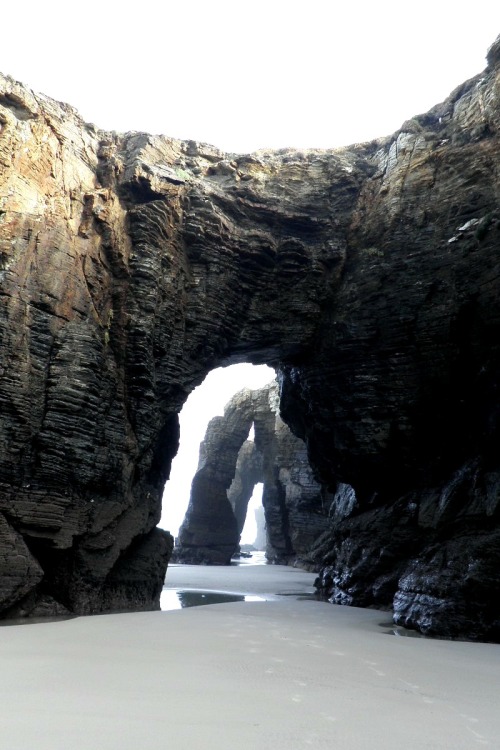
Cathedrals Beach, Galicia
More Posts from Smparticle2 and Others
The Beauty of Webb Telescope’s Mirrors
The James Webb Space Telescope’s gold-plated, beryllium mirrors are beautiful feats of engineering. From the 18 hexagonal primary mirror segments, to the perfectly circular secondary mirror, and even the slightly trapezoidal tertiary mirror and the intricate fine-steering mirror, each reflector went through a rigorous refinement process before it was ready to mount on the telescope. This flawless formation process was critical for Webb, which will use the mirrors to peer far back in time to capture the light from the first stars and galaxies.

The James Webb Space Telescope, or Webb, is our upcoming infrared space observatory, which will launch in 2019. It will spy the first luminous objects that formed in the universe and shed light on how galaxies evolve, how stars and planetary systems are born, and how life could form on other planets.
A polish and shine that would make your car jealous

All of the Webb telescope’s mirrors were polished to accuracies of approximately one millionth of an inch. The beryllium mirrors were polished at room temperature with slight imperfections, so as they change shape ever so slightly while cooling to their operating temperatures in space, they achieve their perfect shape for operations.

The Midas touch
Engineers used a process called vacuum vapor deposition to coat Webb’s mirrors with an ultra-thin layer of gold. Each mirror only required about 3 grams (about 0.11 ounces) of gold. It only took about a golf ball-sized amount of gold to paint the entire main mirror!

Before the deposition process began, engineers had to be absolutely sure the mirror surfaces were free from contaminants.

The engineers thoroughly wiped down each mirror, then checked it in low light conditions to ensure there was no residue on the surface.

Inside the vacuum deposition chamber, the tiny amount of gold is turned into a vapor and deposited to cover the entire surface of each mirror.

Primary, secondary, and tertiary mirrors, oh my!
Each of Webb’s primary mirror segments is hexagonally shaped. The entire 6.5-meter (21.3-foot) primary mirror is slightly curved (concave), so each approximately 1.3-meter (4.3-foot) piece has a slight curve to it.

Those curves repeat themselves among the segments, so there are only three different shapes — 6 of each type. In the image below, those different shapes are labeled as A, B, and C.

Webb’s perfectly circular secondary mirror captures light from the 18 primary mirror segments and relays those images to the telescope’s tertiary mirror.

The secondary mirror is convex, so the reflective surface bulges toward a light source. It looks much like a curved mirror that you see on the wall near the exit of a parking garage that lets motorists see around a corner.

Webb’s trapezoidal tertiary mirror captures light from the secondary mirror and relays it to the fine-steering mirror and science instruments. The tertiary mirror sits at the center of the telescope’s primary mirror. The tertiary mirror is the only fixed mirror in the system — all of the other mirrors align to it.

All of the mirrors working together will provide Webb with the most advanced infrared vision of any space observatory we’ve ever launched!
Who is the fairest of them all?
The beauty of Webb’s primary mirror was apparent as it rotated past a cleanroom observation window at our Goddard Space Flight Center in Greenbelt, Maryland. If you look closely in the reflection, you will see none other than James Webb Space Telescope senior project scientist and Nobel Laureate John Mather!

Learn more about the James Webb Space Telescope HERE, or follow the mission on Facebook, Twitter and Instagram.
Make sure to follow us on Tumblr for your regular dose of space: http://nasa.tumblr.com.



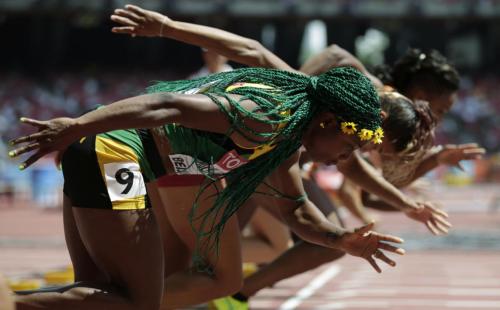
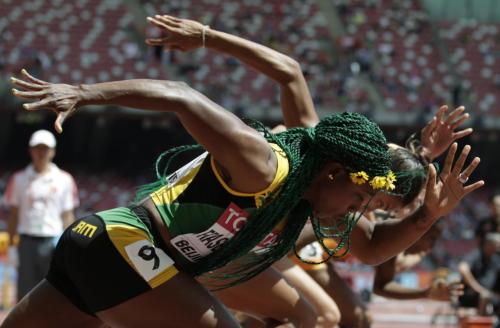

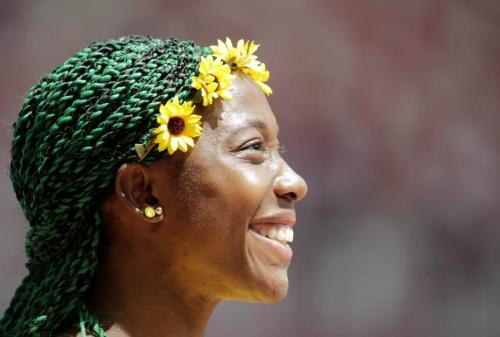
Shelly Ann Fraser Pryce “first ever” 3-time Golden World Champion… See i keep telling ppl’ A true Queen will always Rise & Shine!!! #Pryceless









Tuz Gölü - Cereal / WORDS & PHOTOS: Peter Edel
FOR THE AMERICAN COLOUR FIELD PAINTER BARNETT NEWMAN, THE EMPTY, BOUNDLESS LANDSCAPE ENHANCED AN INDIVIDUAL’S SENSE OF PRESENCE WITHIN THEM. THE TUZ GÖLÜ, THE SALT LAKE LOCATED IN THE CORE OF TURKEY’S ANATOLIAN PENINSULA, IS ONE OF THE PLACES IN THE WORLD WHERE THIS UNDERSTANDING IS EXPERIENCED MOST PROFOUNDLY.
Stress raisers!

The de Havilland DH 106 Comet in flight, the worlds first commercial jetliner. 1952-1953
via reddit
Keep reading

Self-assembling particles brighten future of LED lighting
Just when lighting aficionados were in a dark place, LEDs came to the rescue. Over the past decade, LED technologies – short for light-emitting diode – have swept the lighting industry by offering features such as durability, efficiency and long life.
Now, Princeton engineering researchers have illuminated another path forward for LED technologies by refining the manufacturing of light sources made with crystalline substances known as perovskites, a more efficient and potentially lower-cost alternative to materials used in LEDs found on store shelves.
The researchers developed a technique in which nanoscale perovskite particles self-assemble to produce more efficient, stable and durable perovskite-based LEDs. The advance, reported January 16 in Nature Photonics, could speed the use of perovskite technologies in commercial applications such as lighting, lasers and television and computer screens.
“The performance of perovskites in solar cells has really taken off in recent years, and they have properties that give them a lot of promise for LEDs, but the inability to create uniform and bright nanoparticle perovskite films has limited their potential,” said Barry Rand an assistant professor of electrical engineering and the Andlinger Center for Energy and the Environment at Princeton.
Read more.
:)

If you liked The Map of Physics animation, I bet you’ll like The Map of Mathematics too (also by Dominic Walliman):
h-t Open Culture
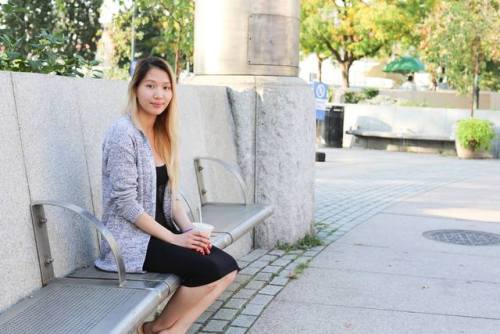
“I was on a leadership team in 5th grade. At the end of the year we were supposed to take a trip to Washington DC. We held fundraisers and everything. But when it was time to go, I didn’t have the identification papers to buy a plane ticket. So our teacher Ms. Rivera decided that we’d take a bus. Just so I could go too. That trip changed my life. It made me want to be a lawyer. And Ms. Rivera became one of the closest people in my life. She always kept in touch. She basically watched me grow up. One time in high school I got in a huge fight with my mom, and Ms. Rivera came and took me on a long car ride. I started to tell her everything. I told her about a recent break-up, and how I smoked weed, and ‘I did this,’ and ‘I did that.’ She just listened to everything. Then she started telling me about her life too. She told me that she’d been in an abusive relationship. I’d always thought her life was perfect because she was a guidance counselor. But she’d been through so much too. When it was came time to apply for college, Ms. Rivera was the one who helped me apply for DACA. She told me about the TheDream.us scholarship. I didn’t even want to apply. I was ready to give up. I’d just accepted that I’d always work in restaurants like my mom. But Ms. Rivera made me apply. She said: ‘What happened to that girl who wanted to be a lawyer?’ I learned that I got the scholarship in February. They’re paying for my entire college. Ms. Rivera was so proud of me. She kept saying: ‘I told you so.’”

Hold a buoyant sphere like a ping pong ball underwater and let it go, and you’ll find that the ball pops up out of the water. Intuitively, you would think that letting the ball go from a lower depth would make it pop up higher – after all, it has a greater distance to accelerate over, right? But it turns out that the highest jumps comes from balls that rise the shortest distance. When released at greater depths, the buoyant sphere follows a path that swerves from side to side. This oscillating path is the result of vortices being shed off the ball, first on one side and then the other. (Image and research credit: T. Truscott et al.)
-
 vvxldflqvver reblogged this · 2 months ago
vvxldflqvver reblogged this · 2 months ago -
 incriminating-wisdom reblogged this · 2 months ago
incriminating-wisdom reblogged this · 2 months ago -
 psina12-blog liked this · 2 months ago
psina12-blog liked this · 2 months ago -
 clearpills reblogged this · 2 months ago
clearpills reblogged this · 2 months ago -
 loudlyprofoundmilkshake liked this · 4 months ago
loudlyprofoundmilkshake liked this · 4 months ago -
 thomasswift85 reblogged this · 4 months ago
thomasswift85 reblogged this · 4 months ago -
 neighbourhood08 liked this · 1 year ago
neighbourhood08 liked this · 1 year ago -
 unanocheenrio liked this · 1 year ago
unanocheenrio liked this · 1 year ago -
 diaries-of-an-aries reblogged this · 1 year ago
diaries-of-an-aries reblogged this · 1 year ago -
 horace11 liked this · 1 year ago
horace11 liked this · 1 year ago -
 spamelotte liked this · 1 year ago
spamelotte liked this · 1 year ago -
 diaries-of-an-aries liked this · 1 year ago
diaries-of-an-aries liked this · 1 year ago -
 vulnus-sanare reblogged this · 1 year ago
vulnus-sanare reblogged this · 1 year ago -
 dahnilyn reblogged this · 1 year ago
dahnilyn reblogged this · 1 year ago -
 knowurworth24 reblogged this · 1 year ago
knowurworth24 reblogged this · 1 year ago -
 knowurworth24 liked this · 1 year ago
knowurworth24 liked this · 1 year ago -
 mirrsd reblogged this · 1 year ago
mirrsd reblogged this · 1 year ago -
 elephantkiss93 reblogged this · 1 year ago
elephantkiss93 reblogged this · 1 year ago -
 3rdl3gend reblogged this · 1 year ago
3rdl3gend reblogged this · 1 year ago -
 jinmark liked this · 1 year ago
jinmark liked this · 1 year ago -
 el-chi liked this · 1 year ago
el-chi liked this · 1 year ago -
 lisaalmeida liked this · 1 year ago
lisaalmeida liked this · 1 year ago -
 melodycroft liked this · 1 year ago
melodycroft liked this · 1 year ago -
 billrme-blog liked this · 1 year ago
billrme-blog liked this · 1 year ago -
 bluegirl1957 liked this · 1 year ago
bluegirl1957 liked this · 1 year ago -
 furworm liked this · 1 year ago
furworm liked this · 1 year ago -
 keenlandlady liked this · 1 year ago
keenlandlady liked this · 1 year ago -
 papittafritta liked this · 1 year ago
papittafritta liked this · 1 year ago -
 mariana-runs liked this · 1 year ago
mariana-runs liked this · 1 year ago
